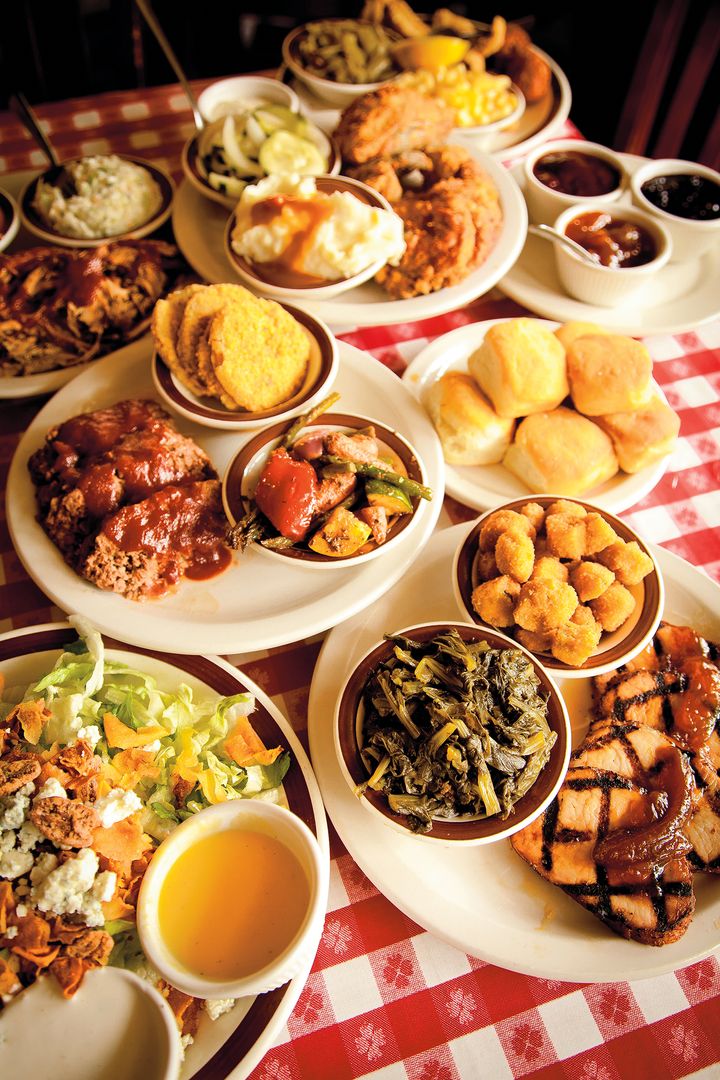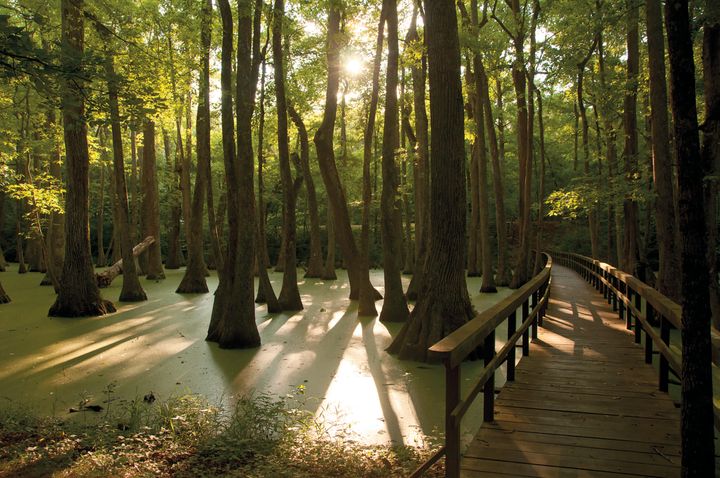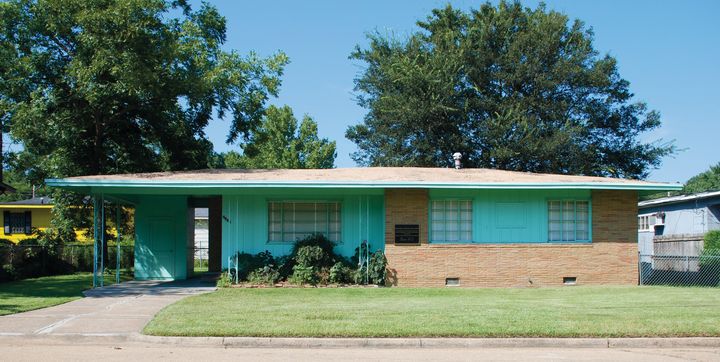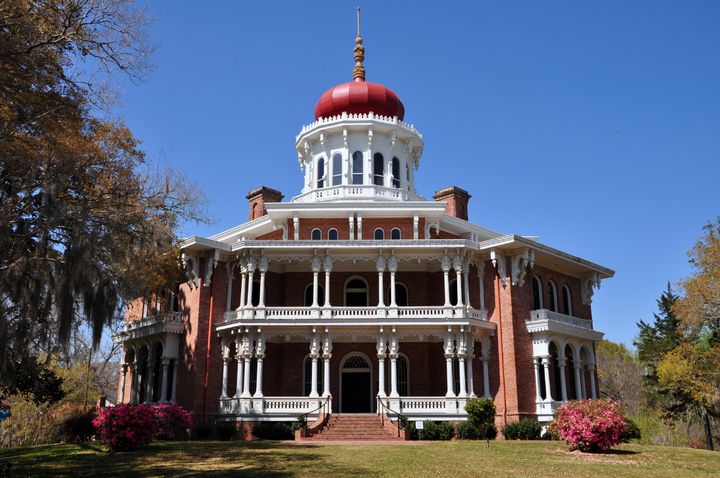
Stretching from the rolling hills of Tennessee to the bluffs of the Mississippi, the Natchez Trace Parkway is one of America’s most scenic and historic drives. It’s also one of the most tranquil: semi trucks are banned from all 444 miles of the two-lane parkway. Today’s Trace was built in the 1930s by the Works Progress Administration along a well-trod route that carried wildlife, Native Americans and European settlers for centuries. As part of Lonely Planet magazine’s “Easy Trips” section, we’re giving readers tips on how to get the most out of their time on this long-trodden route. With the blaze of summer behind us and autumn’s blazing foliage ahead, it’s the perfect season to discover the fascinating history, music and culture of the Natchez Trace.
Stop One: Classic Nashville
Music City is as hot as its famous chicken these days. If you’re wondering what Nashville was like before the tourism boom, hit up Bobby’s Idle Hour. This no-frills dive has live music, a menu featuring pot pies and Vienna sausages, and a craft-free beer list that starts with Budweiser and ends with PBR. Another iconic favorite: The Station Inn. This famous bluegrass venue stands its ground amid towering high-rises in the middle of the city’s stylish Gulch neighborhood.

A family-style bounty from the Loveless Cafe
Stop Two: Love the Loveless
You’ll join the Trace in west Nashville, where it meets up with state Route 100. Before setting off, fill up on satisfying Southern fare at The Loveless Cafe, a classic diner that’s been fueling hungry travelers since 1951. The fried chicken is a beautiful thing, but don’t miss the famous biscuits and peach preserves.

The Natchez Trace Parkway Bridge, near the parkway’s northern terminus
Stop Three: Overlooks and Arches
The Trace’s northern section offers some truly glorious scenic overlooks. But there’s one place where the view is equally impressive from below: the double-arched bridge, at mile marker 438. The arches of the 1,500- foot bridge, which won a Presidential Award for Design Excellence in 1995, rise 155 feet over Birdsong Hollow. At the bridge’s north end, there’s a shoulder where you can take photos from above. After driving across, take the state Route 96 exit to admire the soaring concrete arches from below.
Stop Four: Ancient Monuments
The Trace offers several chances to see Native American archaeological sites, but one of the best and biggest is Pharr Mounds, at mile marker 286.7 about 30 miles northeast of Tupelo, Mississippi. Dispersed over 90 acres are eight sloping burial mounds. Nearly 2,000 years ago, nomadic tribes returned here to cremate or bury their dead. Copper from as far away as the Great Lakes has been found in these mounds, proof that the tribes were part of a complex trading network.

Choice cuts from the Neon Pig
Stop Five: Elvis’ Hometown
Take a break in Tupelo to tour Elvis Presley’s tiny, two-room birthplace or the Tupelo National Battlefield, where Union forces won a decisive victory in July 1864. Stay for a leg-stretching stroll through downtown Tupelo and some farm-to-table fare from Kermit’s Outlaw Kitchen. Before hitting the Trace again, pick up some picnic supplies and local beer at The Neon Pig.

Take the boardwalk through a mysterious cypress swamp
Stop Six: Settlers and Swamps
As you continue south toward Jackson, Mississippi, stop in French Camp Historic Village at mile marker 180.7 to discover what life was like on the Trace for settlers in the mid-19th century. A handful of original cabins remain to be toured, and if you’re lucky, you might see the sorghum mill at work. Five miles down the road, Cole Creek offers a chance to explore one of the Trace’s most singular landscapes. A short boardwalk trail takes you through a bald cypress and water tupelo swamp.

The home of Medgar Evers
Stop Seven: Old and New
Mississippi’s capital, Jackson, has a blend of energy and history that might surprise you. Don’t miss the home of assassinated civil rights leader Medgar Evers, now a museum. Wander the Fondren District, one of the city’s hippest, and savor a vegetarian meal at High Noon Café, inside the organic produce and Rainbow Co-op grocery store, where you can pick up healthy road snacks.
Stop Eight: Natchez Trace 1.0
No trip on the Natchez Trace would be complete without walking part of the “sunken trace,” the original trail blazed by Native Americans, European settlers and buffalo. Mile marker 41.5 near Port Gibson, Mississippi, is a good place to stride in the footsteps of history.

Longwood Mansion, one of many symbols of the town’s historic wealth
Stop Nine: Old Money
Your trip ends in Natchez, on the bluffs of the Mississippi. This small city was one of the wealthiest in the world before the Civil War. In late September and early October, the annual Fall Pilgrimage gives visitors the opportunity to tour some of the city’s finest antebellum homes. End your trip with a meal in King’s Tavern, the oldest standing building in Mississippi (built in 1789).
Pick up the latest issue of Lonely Planet magazine for more and check out Lonely Planet’s Epic Drives of the World for more road trip inspiration.
